Mullein Plant
- January 10, 2024
- 0 comment
The Mullein plant, scientifically known as Verbascum, is a captivating herbaceous wonder celebrated for its distinctive features and diverse applications. With its tall, elegant stalks adorned in soft, velvety leaves and crowned with vibrant yellow flowers, Mullein stands as a botanical marvel in the natural world. Originating from Europe, this plant has gracefully adapted to various climates, now finding its presence in North America, Asia, and parts of Africa.
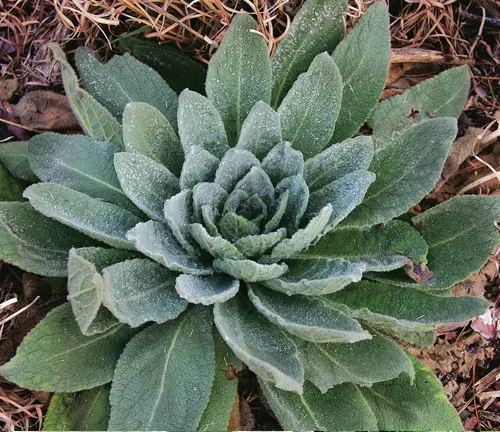
Its historical significance is deeply rooted in traditional medicine, where it has been utilized for centuries to address respiratory issues and soothe skin conditions. Modern applications of Mullein extend beyond tradition, encompassing anti-inflammatory and antibacterial properties, making it a valuable asset in contemporary herbal medicine. Beyond its medicinal uses, Mullein adds a touch of ornamental beauty to gardens and landscapes.
Its culinary applications, folklore, and cultural importance further contribute to its holistic presence in human lives. Mullein, with its rich tapestry of uses and cultural significance, continues to enchant and inspire those who explore its diverse facets.
| Aspect | Details |
|---|---|
| Scientific Name | Verbascum |
| Common Name | Mullein |
| Family | Scrophulariaceae |
| Appearance | Tall stalks with soft, velvety leaves; vibrant yellow flowers |
| Native Habitat | Originally from Europe, now found in North America, Asia, and parts of Africa |
| Growing Conditions | Adaptable to various climates; prefers well-drained soil and sunlight |
| Historical Significance | Traditional medicinal uses for respiratory and skin conditions |
| Modern Applications | Anti-inflammatory, antibacterial properties; used in contemporary herbal medicine |
| Culinary Uses | Adds unique flavor to teas, infusions, and recipes |
| Ornamental Value | Enhances gardens and landscapes with its distinctive appearance |
| Cultural Importance | Significant role in folklore and cultural practices |
| Conservation Status | Not generally considered endangered; conservation efforts promote sustainable cultivation and use |
| Adaptability | Thrives in various climates; adaptable to different regions |
| Challenges in Cultivation | Potential pests and diseases; requires proper care and attention for successful cultivation |
| Environmental Impact | Can positively impact the environment through sustainable cultivation practices |
| Artistic Depictions | Inspires artists and writers, depicted in various forms in art and literature |
Unveiling Nature’s Herbal Marvel

In the vast tapestry of nature’s botanical wonders, the Mullein plant stands as a testament to both historical significance and modern utility. This article embarks on an explorative journey, delving into the captivating realms of the Mullein plant, uncovering its botanical features, medicinal uses, folklore, and much more.
Botanical Features
Description of Mullein’s appearance
The Mullein plant, scientifically known as Verbascum thapsus, boasts a distinctive tall stalk crowned with soft, velvety leaves. Its vibrant yellow flowers add a touch of elegance to its overall appearance.
Native habitats
Originally native to Europe, Mullein has adapted to various climates and can now be found in North America, Asia, and parts of Africa. Understanding its native habitats provides valuable insights into its resilience and adaptability.
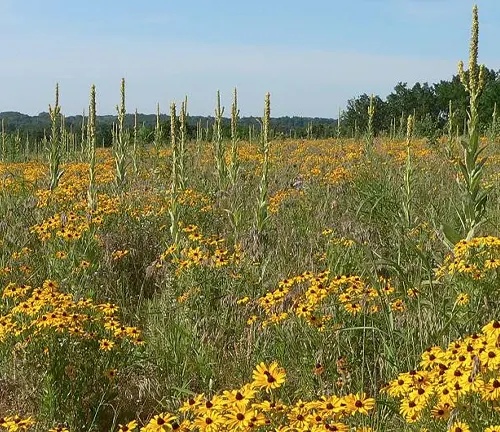
Medicinal Uses
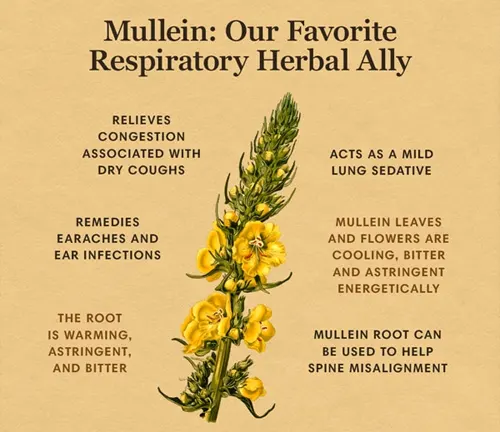
Traditional uses
Mullein has a rich history of traditional uses, ranging from treating respiratory issues to soothing skin conditions. An exploration of these historical applications sheds light on the plant’s versatility.
Modern applications
In contemporary times, Mullein continues to be a medicinal marvel, with applications extending to respiratory health, inflammation reduction, and even as an antibacterial agent. Unraveling its modern uses emphasizes its ongoing relevance in herbal medicine.
Cultivation and Growth
Ideal growing conditions
For those intrigued by the prospect of cultivating Mullein, understanding its ideal growing conditions is paramount. From soil preferences to sunlight requirements, cultivating Mullein successfully requires a harmonious balance.
Tips for cultivating Mullein
This section provides practical tips and insights for cultivating Mullein, ensuring that enthusiasts can embark on a successful gardening journey with this remarkable plant.
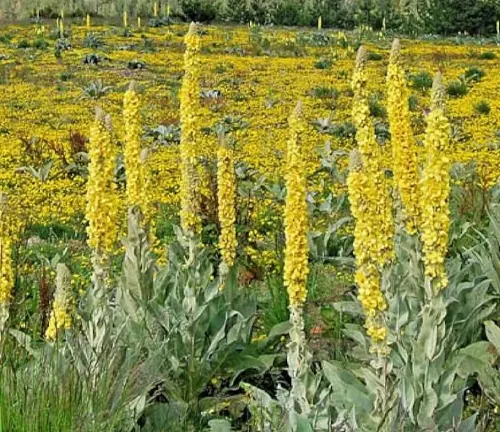
Harvesting and Processing
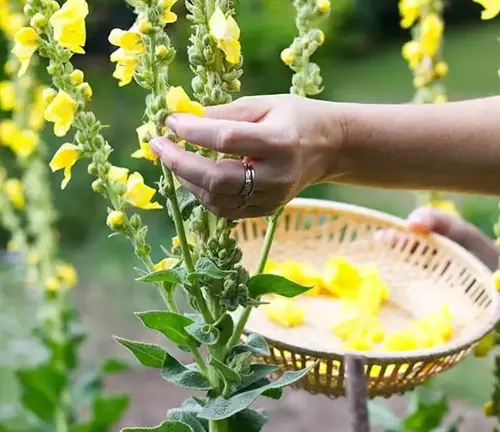
Harvesting methods
The art of harvesting Mullein involves strategic timing and proper techniques to maximize the plant’s yield. Exploring various harvesting methods ensures a sustainable and fruitful harvest.
Processing Mullein for medicinal use
Once harvested, the processing of Mullein for medicinal use is a crucial step. This section guides readers through effective methods, preserving the plant’s therapeutic properties.

Mullein in Folklore
Folktales and beliefs surrounding Mullein
Immerse yourself in the enchanting world of Mullein folklore, where ancient beliefs and folktales intertwine with the plant’s existence. Unraveling these stories adds a layer of cultural significance to Mullein.
Cultural importance
Beyond folklore, Mullein holds cultural importance in various societies. Understanding its role in cultural practices broadens our appreciation for this botanical wonder.
Potential Side Effects
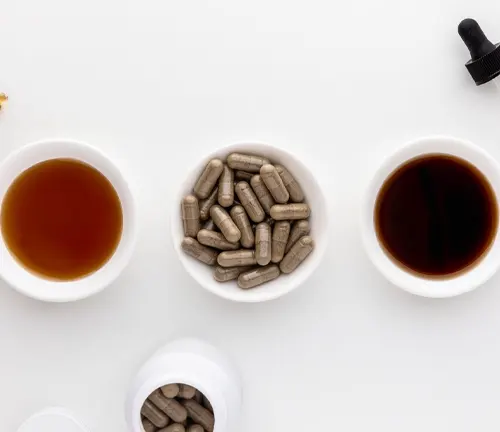
Precautions and warnings
While Mullein is celebrated for its medicinal properties, it’s essential to be aware of potential side effects. This section offers valuable precautions and warnings, ensuring responsible usage.
Consultation with healthcare professionals
Encouraging readers to consult healthcare professionals before incorporating Mullein into their health regimen emphasizes the importance of informed decisions.
Mullein Products in the Market
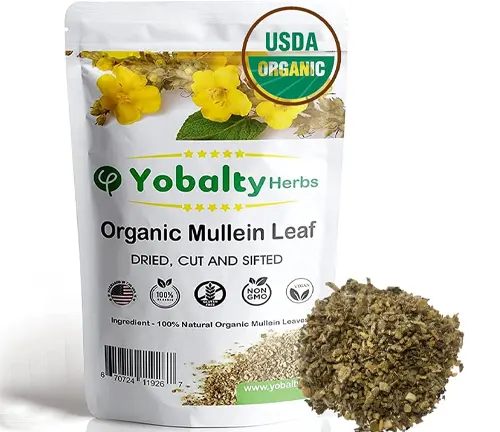
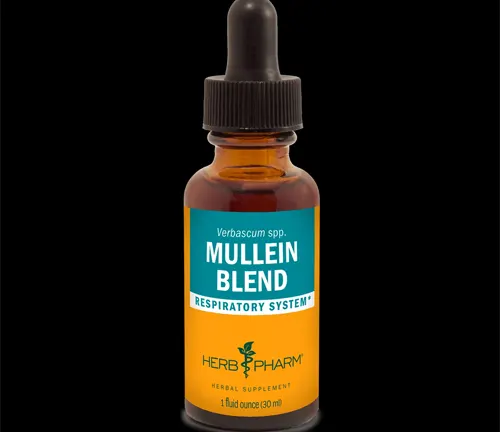
Overview of Mullein-based products
The market is teeming with Mullein-based products, from teas to tinctures. This section provides an overview of popular choices, guiding consumers in their selection.
Popular choices
Delve into the diverse world of Mullein products, exploring popular choices that have gained acclaim for their effectiveness and quality.
DIY Mullein Remedies

Home remedies using Mullein
Empower yourself with DIY Mullein remedies that harness the plant’s natural properties. From soothing teas to homemade salves, discover the art of crafting Mullein remedies at home.
Safety measures
While DIY remedies offer a hands-on approach to Mullein utilization, ensuring safety measures is crucial. This section provides insights into practicing caution for a risk-free experience.
Sustainability and Conservation
Mullein’s impact on the environment
Examining Mullein’s impact on the environment highlights the importance of sustainable practices. Discover how cultivating and using Mullein can contribute positively to the ecosystem.

Conservation efforts
Join the global efforts in Mullein conservation. This section sheds light on initiatives and practices aimed at preserving this botanical marvel for future generations.
Culinary Uses
Culinary applications of Mullein
Beyond its medicinal and ornamental uses, Mullein finds its way into culinary creations. Explore the unexpected culinary applications that elevate Mullein from a herb to a versatile ingredient.

Recipes and culinary tips
For culinary enthusiasts, this section offers recipes and tips, inspiring the inclusion of Mullein in delightful dishes that showcase its unique flavor profile.
Mullein in Art and Literature
Depictions in art
Artists throughout history have been captivated by Mullein’s beauty. Explore depictions in art that immortalize this botanical wonder in various creative expressions.
References in literature
From ancient texts to modern literature, Mullein has left its mark on the literary landscape. Uncover references and symbolism associated with Mullein in the world of words.
Myths and Misconceptions
Addressing common myths
Dispelling myths surrounding Mullein is crucial for fostering accurate understanding. This section tackles common misconceptions and provides clarity.
Clarifying misconceptions
By clarifying misconceptions, readers can approach Mullein with an informed perspective, separating fact from fiction.
Mullein Cultivation Challenges
Common challenges faced by cultivators
Cultivating Mullein comes with its set of challenges. This section addresses common obstacles and provides insights into overcoming them for a successful cultivation journey.
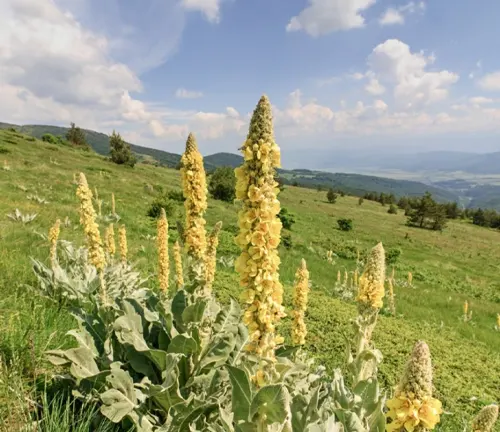
Solutions and alternatives
Discover effective solutions and alternatives to common challenges, empowering aspiring cultivators to navigate potential hurdles.
Different Species
Verbascum thapsus
(Common Mullein)
This is the most widely recognized species, known for its tall stature, velvety leaves, and vibrant yellow flowers. Common Mullein is native to Europe but has naturalized in various regions.
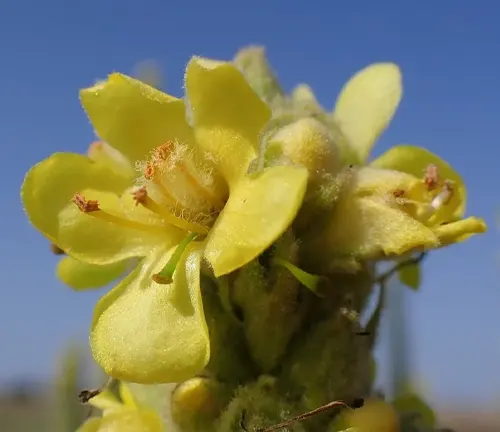
Verbascum blattaria
(Moth Mullein)
Moth Mullein is distinguished by its delicate, moth-like flowers. The plant is shorter than Common Mullein and is native to Eurasia but has also spread to North America.
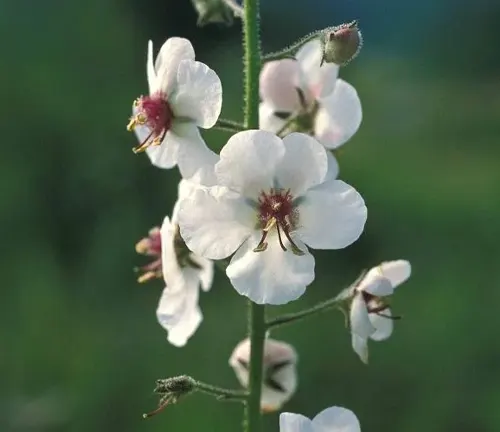
Verbascum densiflorum
(Denseflower Mullein)
As the name suggests, this species produces densely packed flowers on its tall spikes. Native to Europe and Asia, Denseflower Mullein is admired for its ornamental appeal.
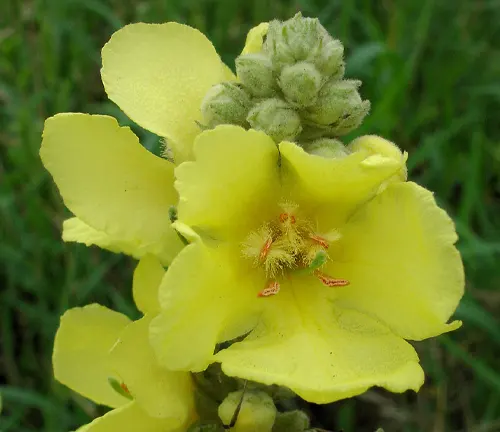
Verbascum olympicum
(Olympic Mullein)
This species is characterized by its impressive height, often reaching up to 8 feet. Native to the Mediterranean region, Olympic Mullein showcases large, yellow flowers.
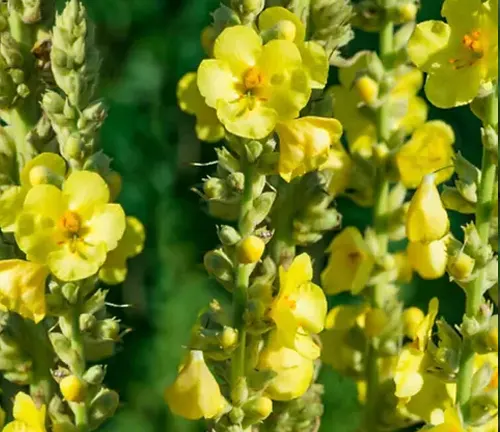
Verbascum chaixii
(Nettle-leaved Mullein)
Nettle-leaved Mullein is known for its deeply lobed leaves, resembling nettle leaves. It produces elegant, star-shaped yellow flowers and is native to Europe.
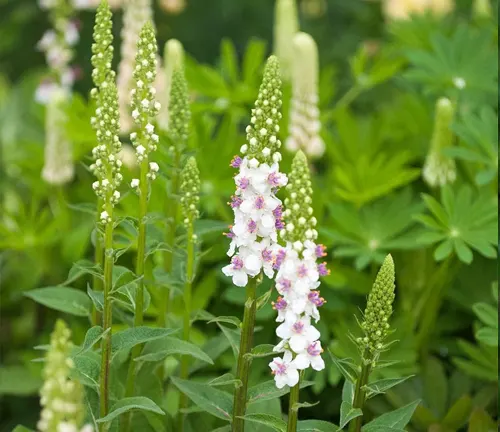
Verbascum phlomoides
(Orange Mullein)
This species features distinctive orange-yellow flowers and is native to Central and Eastern Europe. Orange Mullein is valued for its aesthetic appeal and is sometimes used in traditional medicine.
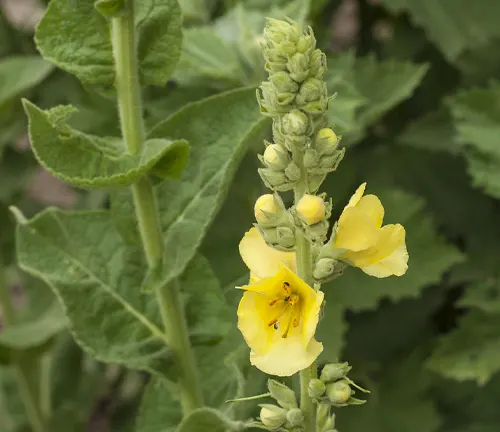
Verbascum virgatum
(Twiggy Mullein)
Twiggy Mullein is characterized by its slender, wiry stems and small yellow flowers. It is native to Central Europe and is often found in rocky or sandy habitats.
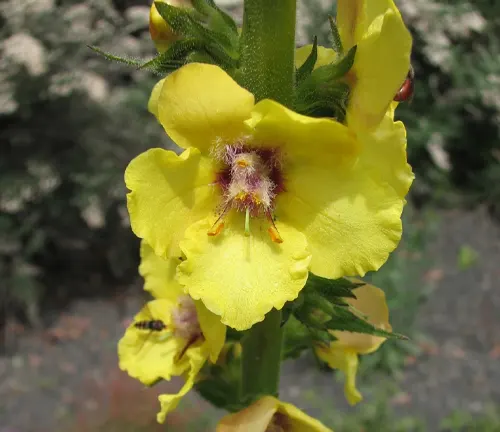
Verbascum nigrum
(Dark Mullein)
Dark Mullein is known for its dark purple-brown stems and yellow flowers. Native to Europe and Western Asia, this species is recognized for its striking color contrast.
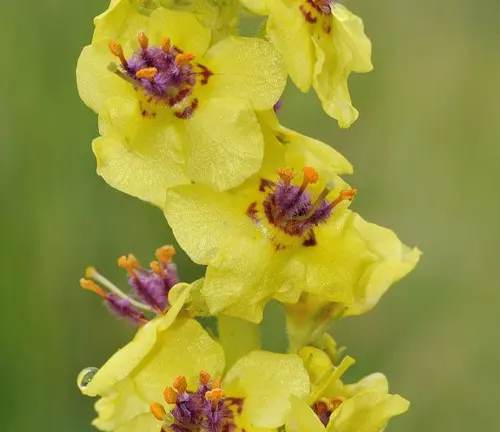
Verbascum sinuatum
(Wavy-leaved Mullein)
Wavy-leaved Mullein is identified by its sinuous or wavy leaves. Native to Southern Europe, it produces tall spikes with yellow flowers.

Verbascum phoeniceum
(Purple Mullein)
Purple Mullein is admired for its vibrant purple flowers. Native to Europe, this species is often cultivated for its ornamental value in gardens.
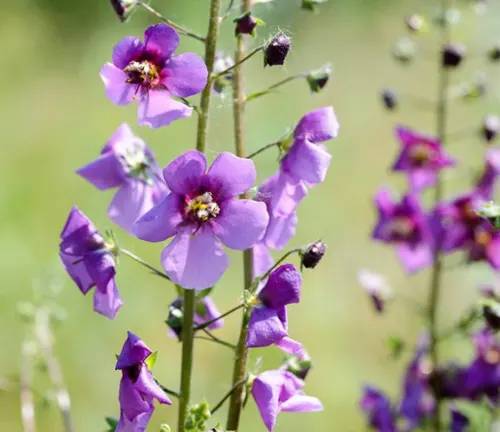
Frequently Asked Questions (FAQs)
- What is Mullein?
Mullein is a herbaceous plant known for its tall stalk, soft leaves, and vibrant yellow flowers. It has a rich history of traditional medicinal uses and is also valued for its ornamental and culinary applications. - Where is Mullein native to?
The common Mullein (Verbascum thapsus) is native to Europe, but various species can be found in different parts of the world, including North America, Asia, and Africa. - What are the medicinal uses of Mullein?
Mullein has traditional uses for respiratory issues, skin conditions, and more. Modern applications include its use as an anti-inflammatory, antibacterial agent, and for respiratory health. - Can Mullein be grown at home?
Yes, Mullein can be cultivated at home. Understanding its ideal growing conditions, including sunlight and soil preferences, is crucial for successful cultivation. - Are there any side effects or precautions when using Mullein?
While Mullein is generally safe, it’s essential to be aware of potential side effects. Precautions include consulting healthcare professionals, especially for individuals with pre-existing conditions. - What are some Mullein-based products available in the market?
Mullein-based products range from teas to tinctures. Common choices include Mullein oil, capsules, and herbal blends. The market offers a variety of options for different preferences. - Can Mullein be used in cooking?
Yes, Mullein has culinary applications. From teas to infusions and even in recipes, Mullein adds a unique flavor to dishes, expanding its usability beyond medicinal and ornamental purposes. - Is Mullein environmentally friendly?
Mullein cultivation can have positive impacts on the environment. Understanding its sustainability and conservation aspects is important for those interested in cultivating or using Mullein. - What are some common myths about Mullein?
Myths about Mullein include misconceptions about its toxicity and adverse effects. Dispelling these myths is crucial for accurate understanding and utilization. - Are there challenges in cultivating Mullein?
Yes, cultivating Mullein comes with challenges, including potential pests and diseases. Learning about common challenges and their solutions is valuable for successful cultivation. - How is Mullein depicted in art and literature?
Mullein has inspired artists and writers throughout history. Explore its depictions in art and references in literature to appreciate its cultural and artistic significance. - Can Mullein be harmful to the environment?
Understanding the potential impact of Mullein on the environment is essential. Sustainable cultivation practices can minimize any negative effects. - Are there alternative uses for Mullein besides medicine and cooking?
Mullein has diverse uses, including its role in folklore, cultural practices, and even as an ornamental plant in gardens. Exploring these alternative uses adds depth to its appreciation. - Can Mullein be grown in different climates?
Yes, Mullein is adaptable to various climates. Understanding its native habitats provides insights into how it can thrive in different regions. - How can I contribute to Mullein conservation efforts?
Learn about conservation initiatives and adopt sustainable practices when cultivating Mullein. Supporting conservation efforts helps preserve this botanical marvel for future generations.


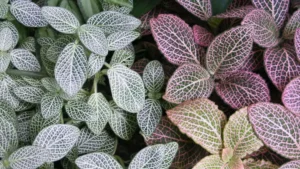


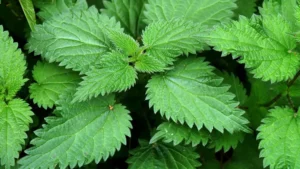
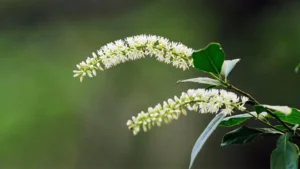
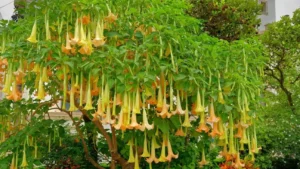
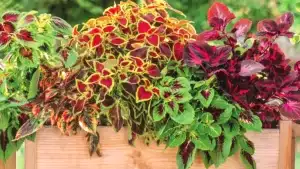

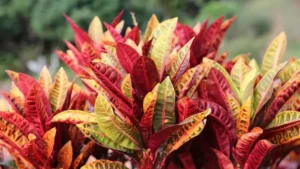


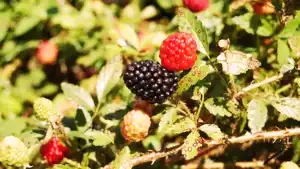
Leave your comment